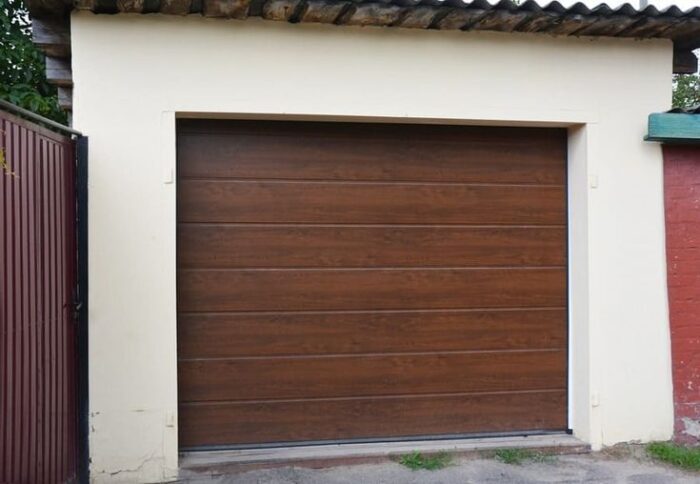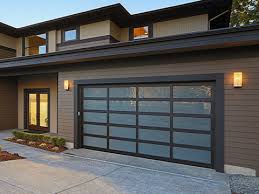As a homeowner who has always been conscious of energy consumption and its impact on both the environment and my wallet, I’ve come to realize that making small changes in various parts of the house can add up to significant savings over time. One area often overlooked when it comes to energy efficiency is the garage. That’s why I decided to explore the world of energy-efficient garage doors.

In this article, I’ll share my journey of discovering the benefits of such doors, the features that make them energy-efficient, and how they can help you save on heating and cooling costs while reducing your carbon footprint according to Keller Garage Door & Gate Repairs.
The Significance of Energy Efficiency
Before delving into energy-efficient garage doors, it’s crucial to understand why energy efficiency matters:
1. Cost Savings: Energy-efficient upgrades in your home can lead to substantial cost savings over the long term. Reduced energy consumption means lower utility bills.
2. Environmental Impact: Decreased energy usage translates to a smaller carbon footprint. Energy-efficient practices contribute to a more sustainable and eco-friendly lifestyle.
3. Comfort: Maintaining a consistent and comfortable indoor temperature is essential for the well-being and comfort of your family.
4. Increased Home Value: Energy-efficient features can increase the resale value of your home, making it more attractive to potential buyers.
5. Government Incentives: Many governments offer incentives and rebates for energy-efficient home improvements, further reducing the cost of upgrades.
The Role of Garage Doors in Energy Efficiency
The garage door is often the largest moving object in a home and plays a significant role in regulating temperature. If it lacks insulation and energy-efficient features, it can become a major source of energy loss. Here’s how garage doors impact energy efficiency:
1. Temperature Regulation: A well-insulated garage door helps maintain a consistent temperature inside the garage. This, in turn, can influence the temperature in adjacent living spaces.
2. Heat Transfer: In extreme weather conditions, heat can transfer through the garage door, affecting the comfort of your home and leading to increased heating and cooling costs.
3. Air Leakage: Gaps and poor sealing in garage doors can allow conditioned air to escape and outdoor air to enter, making your HVAC system work harder to maintain the desired temperature.
4. Solar Heat Gain: The color and material of your garage door can affect solar heat gain. Energy-efficient garage doors reflect more heat and light, keeping the interior cooler.
Features of Energy-Efficient Garage Doors
To save on heating and cooling costs and enhance energy efficiency, look for the following features in garage doors:
1. Insulation: Insulated garage doors are designed to reduce heat transfer and maintain a stable temperature inside the garage. Common insulation materials include polyurethane or polystyrene foam.
2. Weatherstripping: High-quality weatherstripping around the edges of the garage door prevents air leakage and moisture infiltration, enhancing insulation.
3. Energy-Efficient Materials: Opt for garage doors made of energy-efficient materials such as steel, fiberglass, or wood composite. These materials offer better insulation properties.
4. Double-Layer or Triple-Layer Construction: Garage doors with multiple layers of insulation provide enhanced thermal performance, helping to maintain a consistent temperature.
5. Low-E Glass Windows: If your garage door has windows, choose those with low-emissivity (Low-E) glass, which reflects heat and UV rays, reducing solar heat gain.
6. Reflective or Cool Roof Coating: Some garage doors come with reflective or cool roof coatings that can reduce heat absorption and keep the garage cooler.
7. High R-Value: The R-value measures the thermal resistance of a garage door. A higher R-value indicates better insulation properties and greater energy efficiency.
8. Professional Installation: Proper installation is crucial for the effectiveness of energy-efficient garage doors. Ensure it is installed correctly to maximize energy savings.
How Energy-Efficient Garage Doors Save on Heating and Cooling Costs
Investing in energy-efficient garage doors can lead to tangible savings on your heating and cooling bills:
1. Reduced Energy Loss: Insulated garage doors minimize heat transfer, preventing conditioned air from escaping in cold weather and outdoor heat from entering in hot weather. This means your HVAC system won’t have to work as hard to maintain a comfortable temperature indoors.
2. Stable Temperatures: With an energy-efficient garage door, the temperature inside the garage remains more stable. This is especially beneficial if you use your garage for various activities or as an extension of your living space.
3. Lower Utility Bills: Energy-efficient garage doors can result in lower heating and cooling bills, as your HVAC system doesn’t need to run as frequently or for extended periods.
4. Extended HVAC Lifespan: Reduced HVAC usage due to better insulation can lead to a longer lifespan for your heating and cooling equipment, saving you money on maintenance and replacements.
5. Increased Comfort: A well-insulated garage helps maintain a comfortable indoor temperature throughout the year, ensuring your home remains cozy during winter and cool during summer.
Tips for Choosing the Right Energy-Efficient Garage Door
When selecting an energy-efficient garage door, keep these tips in mind:
1. Assess Your Climate: Consider the climate in your region to determine the level of insulation and energy efficiency you need in a garage door.
2. Research R-Values: Look for garage doors with higher R-values if you live in an area with extreme temperature variations.
3. Professional Guidance: Consult with garage door professionals or contractors who can provide recommendations based on your specific needs and budget.
4. Look for Energy Star Certification: Some garage doors are Energy Star certified, indicating that they meet energy efficiency standards set by the U.S. Environmental Protection Agency (EPA).
5. Inspect Weatherstripping: Ensure that the garage door has high-quality weatherstripping to seal any gaps and prevent air leakage.
6. Consider Windows Carefully: If you want windows on your garage door, choose ones with Low-E glass and consider their placement to minimize solar heat gain.
Conclusion: Invest in Energy-Efficient Garage Doors
As a homeowner who values energy efficiency, I’ve come to realize that even small changes, like upgrading to an energy-efficient garage door, can make a significant difference in reducing heating and cooling costs while creating a more comfortable living environment. Energy-efficient garage doors are an investment that pays off over time, offering financial savings, environmental benefits, and improved comfort for you and your family.
So, based from Keller Garage Door & Gate Repairs, when it’s time to replace or upgrade your garage door, consider choosing an energy-efficient option. Not only will you reduce your carbon footprint and save on utility bills, but you’ll also enjoy a more comfortable and energy-conscious home. In the journey toward energy efficiency, every step counts, and upgrading your garage door is a step in the right direction.
Keller Garage Door & Gate Repairs
1213 Hillside Dr, Keller, TX 76248, United States
817-769-3540





